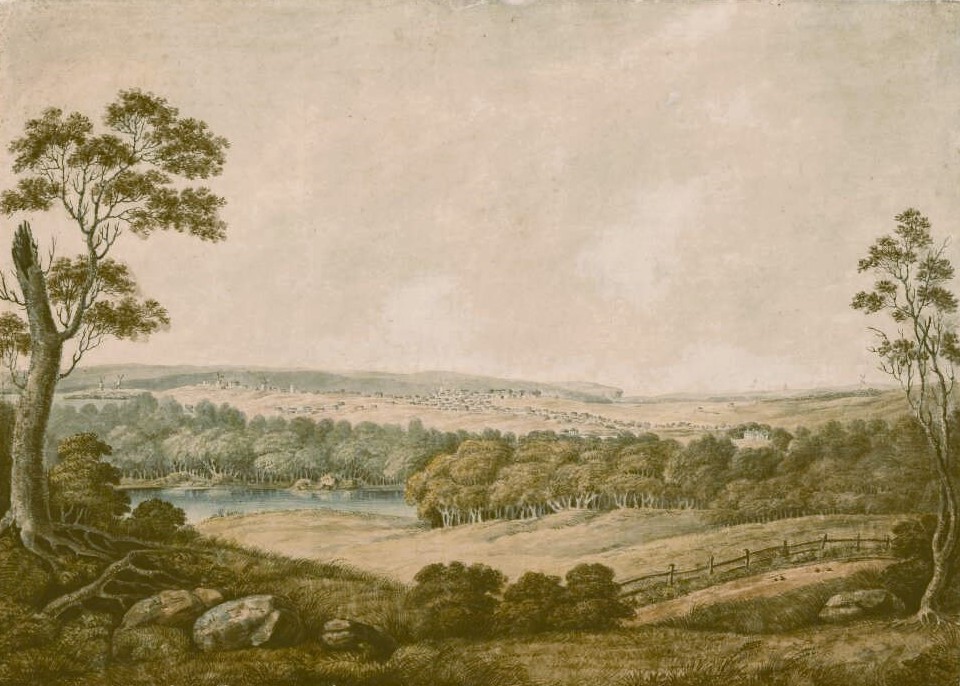By Jenny Broe, Bulletin 6/2024, August
The Hidden History of Blackwattle Bay walk on 16 June, led by Ian Stephenson, was prompted by the original geography of the waterways in the area and how they have changed.

The reason for the meeting place, the Chau Chak Wing museum, was quickly explained by one of Ian’s ‘props’ – a watercolour painted in 1819 from the fence line of Sydney University. The view stretched past a dirt track, now Parramatta Road, down a valley to the water of Blackwattle Bay, an idyllic and rustic scene long gone. As always, Ian had an array of maps, photos and drawings from various archives to help explain the history, and this was augmented by tales of former local citizens.
The walk covered a relatively small area, from Victoria Park’s Lake Northam, a source of Blackwattle Creek, to Wentworth Park where the creek emptied into Blackwattle Bay. The route took us past the locations of existing and former sites connected to Blackwattle Creek: Shepherd’s Nursery, the Brisbane Distillery, the former Chippendale public school, St Benedict’s Broadway, an archaeological site over the former Blackwattle Creek, St Barnabas’ Church, a rare surviving 1850s’ building in the Bishopgate estate and the original gardenesque plan of Wentworth Park. There was a reservoir behind the distillery for its water supply: the source of a marsh that also extended to the bay. The area had been a constant source of distress for the locals due to flooding.
The walk continued through Glebe to Wentworth Park. The area was reclaimed from the bay in 1878. Wentworth Park was planted as a gracious green area typical of its time. Ian spoke of the possibility of its return to a planted area in the future. As we passed the public housing on Wentworth Park Road, which was set for demolition, a few comments were certainly made. From there, a quick drink at the Kauri to toast the Brisbane Distillery.









Join the conversation on Facebook.